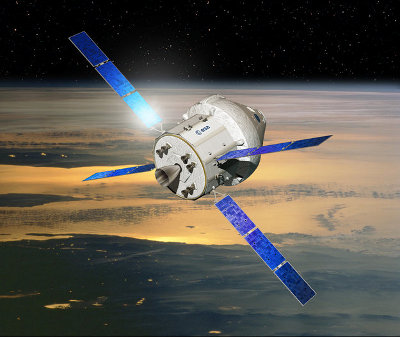
Yesterday, NASA and ESA signed a cooperation agreement in the project of the Multi-Purpose Crew Vehicle (MPCV) spacecraft commonly known as Orion. ESA will build the service module, the one that will provide propulsion, power, thermal control and water to the Orion.
The Orion spacecraft will consist of three main parts: in addition to the service module, there will be the crew capsule, capable of carrying four astronauts in space, and the launch abort system, that will be used to save the crew in the event of life-threatening problems during launch. The service module will be placed directly under the capsule for the crew and will remain active until shortly before the return to Earth.
The Orion project is long term since the first unmanned test are planned for 2014. The spacecraft is scheduled to be launched atop a Delta IV Heavy rocket using a test service module built by Lockheed Martin. The crucial test should be carried out only in 2017 in a demonstration of the new Space Launch System announced by NASA in 2011 with a new rocket. If all goes well, only then they will proceed with the manned test launch.
The technology provided by ESA is based on that of the Automated Transfer Vehicle (ATV), the spacecraft that since 2008 is used for resupply missions to the International Space Station. The ATVs can be used for various other tasks as they may act as extra module for the astronauts while they are docked and even move the station if space debris are found on its trajectory. When they return to Earth, the ATVs carry waste materials.
NASA and ESA have been working together for years to run the International Space Station, but this is another step forward for both agencies. The Space Launch System project is very ambitious but also very expensive and complex. It was approved after years of cuts and downsizing but for NASA it still poses many problems.
On the other hand, it’s a project that’s also meant to open the door to new space missions that will go beyond Earth orbit, meaning to the Moon, to Mars and beyond. In this situation, a collaboration between two major space agencies could really be a historical turning point. It will take years to see results but in the next decade we’ll finally have the opportunity to boldly go where no one has gone before.
[ad name=”Google Adsense 300″]

